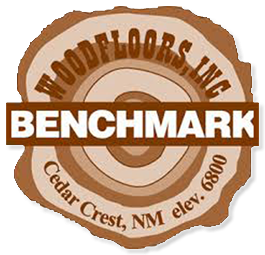Caring for Your Floors
Living an environmentally friendly lifestyle is becoming more of a priority every year, and wood flooring is not only a practical environmental option, but a beautiful one. Use this as a guide for caring for your Floors. Please reach out to us with any questions or concerns that you have!
Preventive Maintenance
in Hardwood floors are one of the best investments you can make. With proper care, they will stay beautiful and last for a lifetime. So how do you keep your floors as beautiful as the day they were installed or refinished? Here are some recommended tips.
- To reduce wear, use area rugs at work stations, dining areas, and heavily traveled areas and pivot-points (i.e. Stair landings, room entries, etc.), especially if there is a large family or indoor pets.
- Use dirt-trapping walk-off mats at all exterior doors to keep sand, grit, grease, and oil outside.
- Sweep or vacuum regularly, since build-up of grit can damage the finish. The vacuum head must be a soft brush or felt type. Be certain the wheels of the vacuum are clean and do not damage the flooring. Do not us a vacuum with a beater bar head.
- Remove spills promptly using a soft cloth and cleaning products recommended by the manufacturer.
- Keep pet’s nails trimmed and paws clean and free of dirt, gravel, grease, oil, and stains.
- Place protective pads beneath furniture legs and feet to reduce scratches and dents. Do not wax the base of chair legs. Clean the protective pads regularly to ensure that grit does not get embedded in them.
- Use a dolly and protective sheets of plywood when moving heavy objects, furniture, or appliances.
- Exposure to the sun and its UV rays accelerate the aging of wood. This causes the stain and/or wood to change color over time. We recommend rearranging rugs and furniture periodically so the floor ages evenly in caring for your floors.
Never use these Products on your Hardwood Floor
The following products should never be used on your hardwood floor:
any type of oil soap; paste wax, or other wax/silicone-based polish; any solvent-based cleaners; pine-based cleaner, vinegar or ammonia.
If you have a urethane finish on your hardwood floor it is unnecessary to wax or polish the floor. Wax or polish will actually make the floor harder to clean and will cause problems when your floor is ready to be recoated.
The use of your manufacturers maintenance and floor-care products is highly recommended in caring for your floors.
Periodic Recoating
Following a regular maintenance program will help preserve the life of your hardwood floor for years. However, no floor finish will last forever. Eventually your floor will need to be recoated.
A hardwood floor should be recoated when the original finish is showing signs of wear, but before it has worn down to the bare wood. If worn down to the bare wood, the floor will be stained by dirt and grime, and will probably require resanding. Please contact us when you have questions about caring for your floors.
The Behavior of Wood Flooring
As per the National Oak Flooring Manufacturers Association
Any article made of wood will continually expand and contact with changes in relative humidity. Wood, being a hygroscopic material, when exposed to air will dry or pick up moisture until equilibrium is reached between the humidity and the temperature of the air. Moisture absorption causes wood to expand and moisture loss causes wood to shrink.
Generally, wood flooring is expected to expand in wetter climates and shrink in dry climates. How much depends on your particular area and the conditions surrounding the installation. In New Mexico, during the winter months, two things happen. As the temperature drops, the humidity drops. When the temperatures drop homeowners turn on their heating systems and keep doors and windows closed. This heat dries out the home and that, combined with the already low humidity levels, pulls moisture from the wood, causing shrinkage and cracks between boards. This can be somewhat minimized by having a humidifier attached to the heating system and maintaining a relative humidity of 35 to 45 percent whenever possible during the heating season. As the temperature and humidity changes occur in the summer, cracking should remedy itself. As moisture is also absorbed back into the wood, expansion occurs and wood floors return to their original state before the winter season.
It is recommended that you do not fill your wood floor during the winter months When the wood expands in the summer, the wood will either force out the excess fill or boards will warp. Wood must go somewhere as it expands.
Finally, it is important to remember that shrinkage is not a flaw in the wood or an installation related problem. The material is just reacting naturally to changes in moisture levels. Be sure to contact us with any questions regarding caring for your floors.
